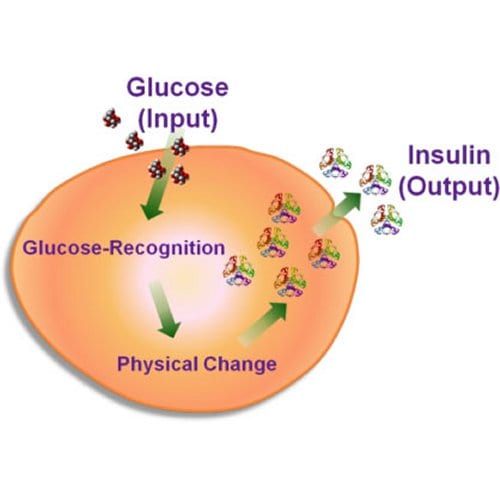 With diabetes mellitus becoming an important public health concern, insulin delivery systems are attracting increasing interest from both scientific and technological researchers. Current treatment of diabetes consists of self-regulation of blood glucose levels through frequent blood glucose testing and a combination of insulin administration. However, only about 20% of subcutaneously injected insulin reaches the functioning organ. Moreover, the burden of daily injections, stress, pain, inconvenience, cost, infection, and the local hypertrophy and fat deposition at the injection sites remain problems.
With diabetes mellitus becoming an important public health concern, insulin delivery systems are attracting increasing interest from both scientific and technological researchers. Current treatment of diabetes consists of self-regulation of blood glucose levels through frequent blood glucose testing and a combination of insulin administration. However, only about 20% of subcutaneously injected insulin reaches the functioning organ. Moreover, the burden of daily injections, stress, pain, inconvenience, cost, infection, and the local hypertrophy and fat deposition at the injection sites remain problems.
In recent years, non-invasive insulin delivery systems have been intensively exploited, but frequent blood sampling and glucose testing are still required to adjust the dose and dosing time of insulin. Clearly, new insulin delivery systems that can help patients to manage the disease easily and painlessly are highly desirable.
Shuiqin Zhou (Staten Island, New York, United States) and Weitai Wu (Xiamen, China) now provide a review and perspective on glucose-responsive materials for insulin delivery systems (GRIDS), which represent one of the most promising advances toward the “Smart Insulin” technology that can detect elevated glucose levels and automatically dispense insulin as necessary. Three types of GRIDS are discussed, based on different fundamental mechanisms of glucose-recognition: a) glucose enzyme, b) glucose binding protein, and c) synthetic boronic acid as the glucose-sensitive component. Besides discussing the impressive progress has been made in the field the researchers also provide a critical summary of current challenges and limitations.
This article is part of the special Best of Macros 2013 issue, and is now free to read at http://www.best-of-macros.de!

















